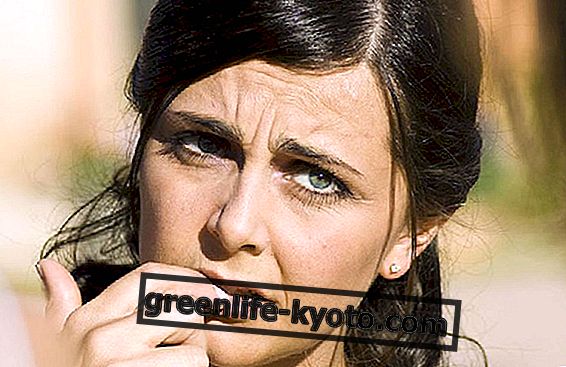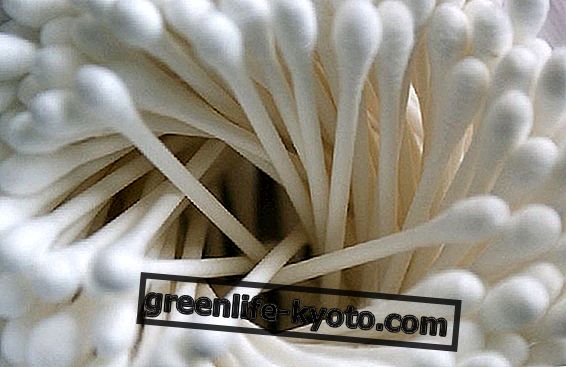
In the history of man, art has always had a great value for developing a reading of reality, for communicating emotions and feelings, for invoking propitiatory forces, capable of making, for example, get a good hunt, to praise and celebrate the "greatness" of a god, a people, a person.
The etymological meaning of the term "art" comes from the Indo-European root "are" or "king" (adapt, adjust); from the Latin "ars, artis" (way of doing or being), we could then immediately point out that art adjusts the way of being!
Speaking of art, Origen would say, "... is like relying on an ocean of many mysteries with a small wood".
From the origins in the cultures of the East and the West the myths, the archetypes of literature and the figurative arts, have been consecrated as knowledge, life, art; art, from these cultures, has been considered as commitment, discipline, research, uninterrupted exercise.
Artistic creation is analogical, unites, is in itself harmonizing, unlike logical-dual thinking. Art care, first and foremost takes care of the human being, is the response to the requests to fix, embellish, educate, entertain the person throughout the whole life; taking care of these issues is a pedagogical - artistic and at the same time preventive process.
Painting, sculpture, music, poetry, theater, dance and today new art forms are part of art.
Curt Sachs, a German ethnomusicologist, writes (1): "Dance is the mother of all arts. Music and poetry are determined over time, figurative arts and architecture in space: dance lives equally in time and space."
I would now like to take you to reflect on what it means to be well-being through the arts, such as music and dance, theater, the word, transversally touching the arts as a therapy, to go to concretize really being well in the art of everyday life, or taking up the etymological meaning of art that we read a little while ago.
The art itself creates well-being, creates emotions in the viewer, appreciates it; for those who produce art it is a means of communicating oneself to the world; if artistic expression is the culmination of the creative dimension, of the artist, for man, woman, who live every day between work, home, family, study, creativity becomes the ability to generate new things, the ability to ask questions concerning the human being in a vital sense, the ability to build a life driven by one's own inner world, trying to communicate and clearly manifest one's personality (as the artist does with his work of art, but for the common man in everyday life).
If all this is true and we feel it within us, if we produce art and if we use art, we can lay the foundations for defining the arts as therapy now, as art with other purposes becomes therapy ; therapy from the Greek θεραπεία (therapeia): cure, healing .
Therapy is for us today the treatment of diseases, it is a method used for their healing and to alienate the symptoms, in order to restore a pathological state to a state of health, or to make the manifestation of uncomfortable symptoms bearable. This is stated in the manuals! Concretely, the meaning of therapy, therefore, depends on the definitions of health and pathology and on the diagnostic tools available to distinguish between them.
When we talk about health we can affirm the definition given by the World Health Organization (WHO): health is a "state of complete physical, mental and social well-being and not merely the absence of disease" and is considered a right.
The art therapies are not only interested in the representative world (drawing, sculpture, etc.), but also in all those activities that lead to an exchange, communicative, of "interpersonal relationship" through an artistic medium. Therefore, in the logic of the "arts-therapies" the fulcrum of the experience is to create a "moment of encounter" in which "to tell one's own daily life" .
The resource used is the creative process (2) in itself: the creative process uses symbols and metaphors, involving the subject in activities that involve a sensorial and kinesthetic commitment and is proposed as a means to identify and express their emotions, and to understand and resolve certain difficulties. The possibility of using the creative process for a person with different problems means having the opportunity to recover the creativity of everyday life: the ability to generate new things, the ability to ask questions concerning the human being in a vital sense, the capacity to build a life driven by one's inner world, trying to communicate and clearly manifest one's personality .
Maslow (3) says that: "The creativity of the man who realizes himself (4) seems rather to be close to the universal" ingenuous creativity "of unpolished children. It seems to be more than anything a fundamental characteristic of human nature, present in all, that is, a potentiality given to all human beings at birth. But most men lose it as they enter culture "(Maslow 1954, p. 278).
Creativity is a function of the ego, which does not consist exclusively in the production of objects. The ego can be creative in many ways and can live its creativity at any time in life.
Vygotsky (5) says that creativity exists everywhere "(...) there is a man who imagines, combines, modifies and realizes something new, even if this something new may appear a tiny speck in comparison to the creation of genes".
This new product does not necessarily have to be a concrete object, it is also a way of being in relationship, of bringing out what is inside, bringing one's inner self.
Thus, within a creative relational relationship, of a process such as that which is established through dialogue with art therapy, the person can go to recover his creativity and with it self-confidence, thus recovering a positive self-image. Within a course of therapy, often long and difficult, a space of support, acceptance of the body and creativity, I believe are indispensable and can be well integrated with other instruments in a dimension of global management (understood in the vision of the person that moves between the autonomies of everyday life, leisure time, the cognitive and affective dimension, but also creative, ). The Artiterapie bring the child, the adult, the elderly to recover a space of self-expression through movement, music, graphic sign, manipulation, the word ... to retrace life creatively, intellectually and spiritually, the experiences. The person asking for help can bring this speech, not in a day, but over time, thus reversing his perspective: the person with problems has removed his most authentic dimension, his creativity.
The therapist, the conductor, becomes in the field of artiterpaie, a "transitional object", a mediator who "educates", where educating is about to e-ducere, that is to say, to take out and, in therapeutic and rehabilitative practice, it is a taking out of the " darkness "towards greater knowledge and awareness, a" pre-verbal "dialogue, indispensable for creating a" tension "that is expected and that translates into" desire ": artistic expression not as observation, but as" exchange ", that is a "dialogue" made of sounds, movements, images.
The Arts-Therapies have in them the profound dimension of the links between arts and pre-verbal language, which allow the subject to discover an intimate world, often unknown, asleep, not yet developed. In this "territory" we find the greatest treasures of the human being that fill everyday life and dreams, giving meaning to creativity and to the imaginary dimension. In this order of ideas the Arts-Therapies are read as a "path traced in pre-verbal language" to reach personal well-being, but also that balance between body, mind and affects that is an expression of "health". It is in this way that the subject comes to appreciate the sense of self, to value his own body that works in all its parts, which fills him with knowledge and affections, to imagine his "interesting, new and unexpected experiences".
"Art has value for its ability to perfect the mind and sensitivity, rather than for its final products" (Fred Gettings, 1966)
In a text written a few years ago "The artistry in Italy", published by Gutemberg in 1995, among the art therapies we recognize: art - music - dance - theater
[1] Curt Sachs, History of Dance, Net, Milan, 2006 (published by Eine Weltgeschichte des Tanzes, D. Reimer AG, Berlin, 1933)
[2] Jung spoke of art as a means of contacting and expressing images belonging to the unconscious, bringing attention to the creative process, which in his opinion consists in activating the unconscious archetypal images, reworking them and transforming them into a finished product. The artist is therefore the one who translates the archetypal images that derive from the profound unconscious into the language of the present, thus making them understandable to all. Starting from his theory of archetypes and the concept of the collective unconscious, Jung attributes a social value to art.
[3] Abraham Harold Maslow American immigrant of Russian origins (1908-1970) a leading exponent of the so-called "humanistic psychology
[4] Self-realization is the realization of one's own potential; objective of the person.
[5] Lev Semyonovich Vygotsky (1896-1934) graduated in law from Moscow University and did many readings in literature, linguistics, psychology, art, social sciences and philosophy. He was a university lecturer in psychology in a provincial town in Western Russia.













